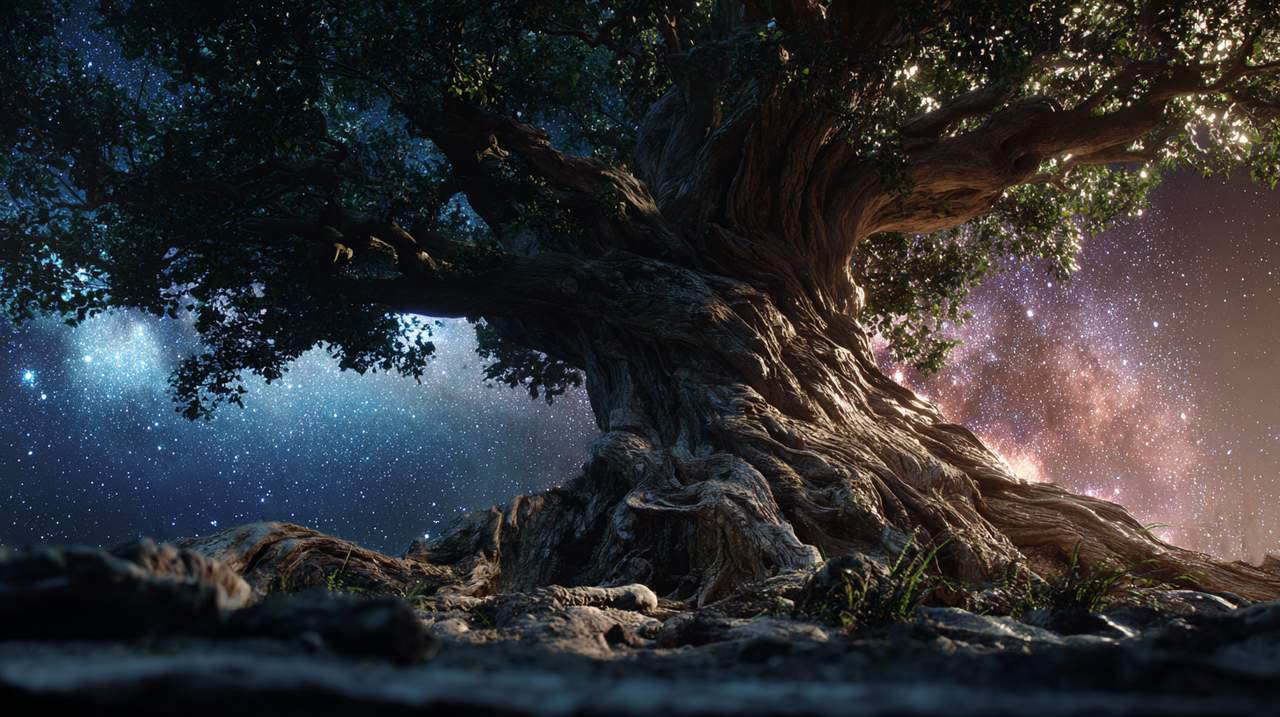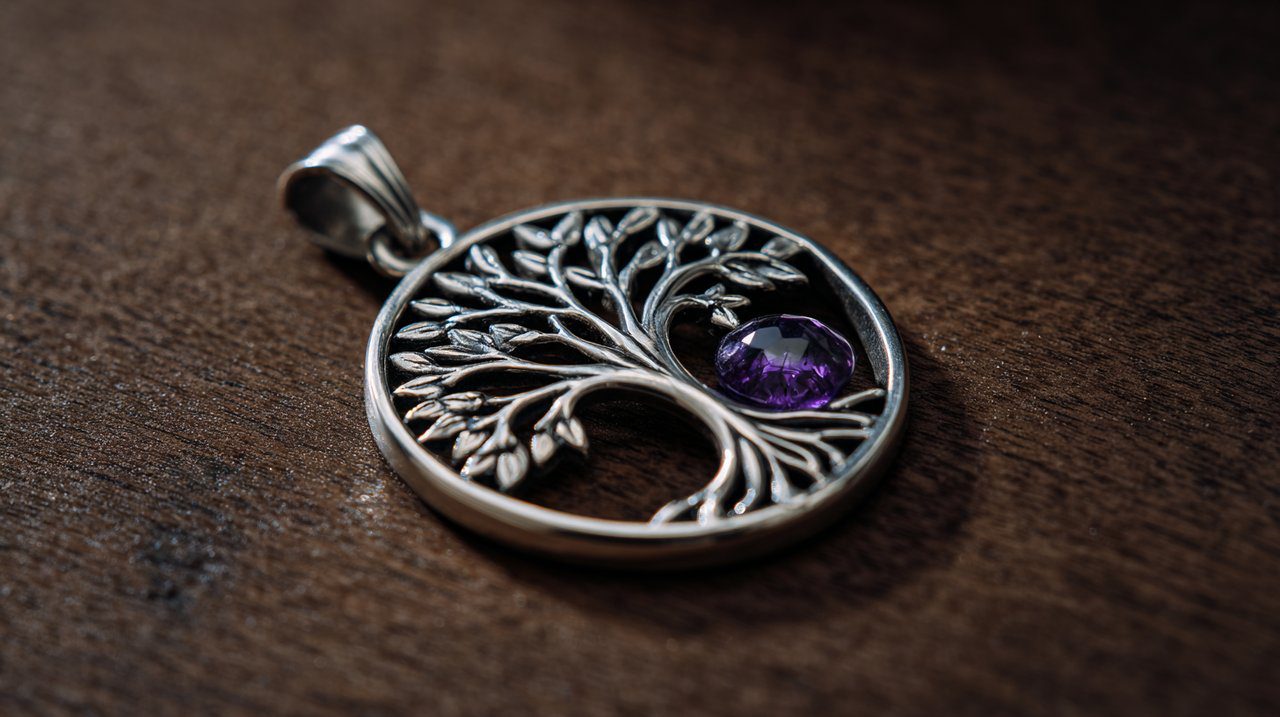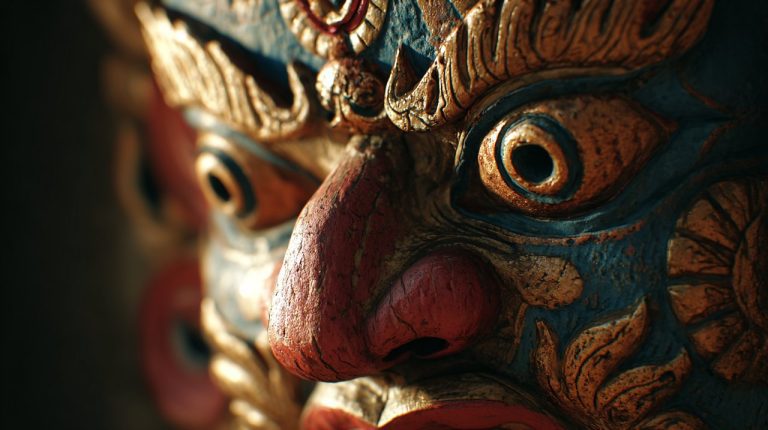Symbols of the Tree of Life: A Cosmic Blueprint for Understanding Existence
Across the vast canvas of human history, a singular pursuit has consistently captivated our collective consciousness: the contemplation of life’s fundamental questions. What truly defines existence? How are all entities interwoven into a cohesive whole? From the earliest etched symbols in ancient caves to the towering grandeur of the world’s most revered cathedrals, one image has recurred as a potent, compelling answer: the Tree of Life.
Far from being a mere decorative motif, this symbol stands as a universal archetype, a cosmic blueprint that offers a profound framework for comprehending existence, the intricate processes of growth, and the ceaseless dance of creation itself.

The Enduring Tapestry of Life’s Tree Symbolism
For countless generations, the Tree of Life has served as a silent, yet exceptionally eloquent, witness to humanity’s persistent quest for meaning. Its branches ascend towards the heavens, while its roots delve deep into the earth, embodying a profound connection between the celestial realms and the chthonic depths—a powerful visual metaphor for the unity of all things.
Ancient Roots: A Universal Archetype
Long before the advent of written history, the image of a magnificent tree, frequently adorned with fruits or celestial bodies, manifested in the myths and artistic expressions of widely disparate cultures. This was not a concept that originated in one locale and then propagated; rather, it appears to have arisen independently across the globe, suggesting an inherent human resonance with its potent symbolic power.
The Tree of Life, in its myriad forms, stands as a testament to humanity’s shared spiritual heritage, a symbol as ancient and enduring as consciousness itself.
From Sumerian cylinder seals depicting a divine tree guarded by mythical creatures to ancient Egyptian papyri illustrating the Tree of Ished, its pervasive presence is undeniable. These early representations consistently linked the tree to creation narratives, divine knowledge, and the perpetual cycle of life and death.
Core Meanings: Connection, Growth, Rebirth
At its very heart, the Tree of Life encapsulates several fundamental concepts that resonate deeply with the human experience. These principles offer a lens through which to view not only the natural world but also our inner lives and societal structures.
- Connection: Its profound root system symbolizes an unbreakable link to the past, to our ancestors, and to the very earth that sustains us. Simultaneously, its sprawling branches represent the intricate network of all life, elegantly linking every being into a vast, interconnected web.
- Growth: Much like a tiny seed unfurls into a towering, majestic tree, this symbol powerfully embodies personal development, the accumulation of wisdom, and the journey of self-discovery. It speaks to continuous evolution and the boundless potential for expansion within each individual.
- Rebirth and Immortality: The cyclical nature inherent in a tree—the shedding of leaves in autumn, followed by the vibrant blossoming anew in spring—serves as a compelling metaphor for renewal, resurrection, and the eternal cycle of life, death, and subsequent rebirth. In numerous traditions, it is also closely associated with immortality or the promise of eternal life.
- Fertility and Abundance: Through its capacity to bear fruit and nurture diverse forms of life, the Tree of Life frequently represents fertility, prosperity, and the boundless, generative abundance intrinsic to nature.
A Cosmic Blueprint: Diverse Cultural Manifestations
While the core symbolism of the Tree of Life maintains a remarkable consistency across time and space, its manifestations are richly varied, each imbued with unique narratives and specific attributes across the globe. Each cultural interpretation, in essence, adds another intricate thread to its already profound and universal tapestry, collectively revealing a shared human understanding of its deep significance.
From Norse Yggdrasil to Kabbalah’s Sephirot
In the expansive tapestry of Norse mythology, the mighty Yggdrasil stands as a cosmic ash tree, connecting the nine distinct worlds, from the celestial realm of the gods (Asgard) to the shadowy underworld (Helheim). It is far more than a mere tree; it is the very axis of existence, providing sustenance and structural integrity to the entire cosmos, its roots delving into primordial wells of profound wisdom.
In stark yet complementary contrast, we find the Kabbalistic Tree of Life, a central mystical concept within Judaism. Here, it is depicted as ten interconnected spheres, known as Sephirot, linked by 22 paths. This intricate diagram maps the emanation of the divine into the created world, serving as a profound philosophical and spiritual tool that guides practitioners through a journey of both cosmic and self-understanding.
Eastern Wisdom: The Bodhi Tree and Ancestral Connections
Moving eastward, the Tree of Life assumes equally profound and revered forms within Eastern traditions. The Bodhi Tree (Ficus religiosa) is held sacred in Buddhism as the very tree under which Siddhartha Gautama attained enlightenment. It thus symbolizes wisdom, spiritual awakening, and the arduous path to liberation, standing as a living monument to profound spiritual transformation.
Across Asia, particularly within animistic and shamanistic practices, trees are frequently regarded as direct conduits to the spirit world, serving as dwelling places for ancestors or powerful deities. The venerable sacred Banyan tree in India, with its aerial roots descending to form new trunks, offers a beautiful and tangible illustration of interconnectedness and the continuous, unbroken lineage of life. This deep connection to heritage and destiny is also explored through the study of Zodiac Signs and Chinese Zodiac significance, which offer unique lenses for self-understanding and cosmic alignment.
Indigenous Echoes: Sustenance and Sacred Bonds
Throughout the world, many indigenous cultures enshrine the Tree of Life as a central tenet of their worldview. For numerous Native American tribes, the World Tree often occupies the universe’s very center, forging a sacred link between heaven and earth, providing essential sustenance, and serving as a revered gathering place. Their deep reverence for nature is inextricably intertwined with the tree’s powerful symbolism of balance and profound interconnectedness.
Similarly, within various African cosmologies, specific trees are considered sacred, believed to embody the spirits of ancestors or to act as vital hubs for community life. These traditions underscore the tree’s multifaceted role, not merely as a symbol, but as a living entity that actively sustains both physical and spiritual well-being.
Embodied Wisdom: The Tree of Life in Adornment
Beyond its abstract symbolic power, the Tree of Life has found tangible, beautiful expression in art, jewelry, and personal adornments. These physical manifestations allow individuals to carry the symbol’s profound meaning with them, serving as a constant reminder of its core principles and fostering a personal connection to this ancient wisdom.

Sacred Materials: Amplifying Meaning
When integrated into jewelry, the Tree of Life often features specific gemstones or materials chosen not merely for their aesthetic appeal, but for their complementary symbolic properties. For instance, a luminous peridot might be selected to signify growth and renewal, the deep green of emerald for abundance, or a vibrant amethyst to represent spiritual connection. The careful choice of material can significantly amplify the tree’s inherent meanings, personalizing its message for the wearer.
Intentional Adornment: Resonance and Purpose
The act of selecting a particular stone or material for a Tree of Life adornment is a deeply personal one, guided by individual resonance and intention. One might consider which aspect of the Tree of Life most aligns with their current life journey:
- For those seeking a sense of grounding and stability, materials such as jasper or hematite might form an ideal base.
- Should the focus be on spiritual growth and intuition, stones like amethyst or lapis lazuli could be chosen to represent the leaves or branches.
- If the emphasis lies in fostering healing and harmony, then green aventurine or rose quartz could be thoughtfully incorporated.
This deliberate intention behind one’s choice imbues the piece with a unique personal power, transforming it from a mere adornment into a spiritual anchor or a tangible touchstone for one’s journey, akin to the purposeful use of a Tibetan mala in meditative practices.
Adorning the Self: Jewelry as a Spiritual Anchor
Wearing a Tree of Life pendant, ring, or bracelet transcends simple fashion; it becomes a quiet declaration of connection. It functions as a personal talisman, a tangible link to the universal wisdom it represents, much like an authentic Tibetan bracelet or a Tibetan ring serves as a spiritual anchor. In moments of doubt or uncertainty, it can serve as a powerful reminder of one’s inner strength, deeply rooted heritage, and boundless potential for growth. In times of joy, it becomes a celebration of the interconnected beauty of existence itself.
Cultivating the Living Symbol: Modern Resonance and Personal Journey
In our rapidly evolving and often fragmented modern world, the enduring symbols of the Tree of Life offer far more than mere historical curiosity. They provide a timeless and profoundly relevant framework for navigating contemporary challenges and fostering personal well-being. The symbol, in essence, extends an invitation to actively cultivate its principles within our daily lives.
Beyond Symbol: Integrating Archetype into Daily Life
The Tree of Life encourages us to look past superficial divisions and to recognize the profound, underlying interconnectedness of all things. It prompts a crucial shift in perspective, moving us away from an understanding of isolated existence towards perceiving oneself as an integral and vital part of a larger, living system. This archetypal understanding can, quite remarkably, inform our decisions, enrich our relationships, and shape our impact on the world around us.
Nurturing Personal Growth and Well-being
Just as a majestic tree requires consistent nourishment and diligent care to flourish, so too does the individual. The Tree of Life thus serves as a powerful and apt metaphor for self-care and the continuous pursuit of self-improvement. It gently encourages us to:
- Deepen our roots: This involves connecting with our heritage, clarifying our core values, and exploring our inner self through practices of introspection and mindfulness.
- Extend our branches: It calls us to embrace new experiences, to continuously learn, and to grow both intellectually and spiritually.
- Bear fruit: Ultimately, it inspires us to share our unique gifts, accumulated knowledge, and profound compassion with the wider world.
The Call to Reconnection: Self, Nature, and Community
The ultimate and perhaps most poignant message of the Tree of Life is one of profound reconnection. It issues a compelling call to re-establish our intrinsic bond with the natural world, to recognize the sacred in every living thing, and to understand our indispensable place within the vast, intricate web of life. It serves as an essential reminder that our individual and collective well-being is inextricably linked to the health of the planet and the harmony of our communities.
By actively embracing the enduring wisdom embodied by the Tree of Life, we are not merely appreciating an ancient symbol; we are engaging with a living, dynamic philosophy. It invites us to embark upon a continuous journey of understanding, to deepen our roots, extend our branches, and ultimately, to flourish in profound harmony with the cosmos. Indeed, the very questions that opened our exploration—the essence of life, the interconnectedness of all things—find their most resonant answers within the timeless embrace of this universal archetype. The Tree of Life, then, is not just an image of what is, but a guiding vision for what we can become.
💡 Frequently Asked Questions
The Tree of Life is a universal archetype and cosmic blueprint that provides a framework for understanding existence, growth processes, and creation. It visually represents the profound connection between celestial realms and earthly depths, symbolizing the unity and interconnectedness of all things.
At its heart, the Tree of Life symbolizes Connection (to ancestors, earth, and the interconnectedness of all life), Growth (personal development, wisdom, and self-discovery), Rebirth and Immortality (renewal, resurrection, and the cycle of life, death, and rebirth), and Fertility and Abundance (nature's generative capacity).
The Tree of Life manifests diversely across cultures. Examples include the Norse Yggdrasil, a cosmic ash tree connecting nine worlds; the Kabbalistic Tree of Life, depicting ten interconnected spheres; the Bodhi Tree in Buddhism, symbolizing enlightenment; and sacred trees in various indigenous cultures, representing links to ancestors or the spirit world.
In modern life, the Tree of Life encourages recognizing the interconnectedness of all things and serves as a metaphor for self-care and continuous self-improvement. It prompts individuals to 'deepen their roots' (connect with heritage), 'extend their branches' (embrace new experiences), and 'bear fruit' (share gifts and knowledge), fostering reconnection with self, nature, and community.







